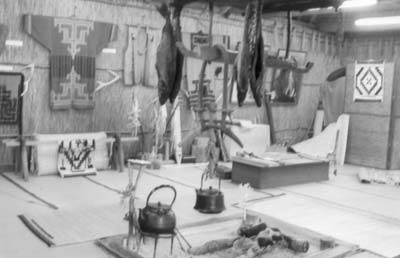Japan’s Ainu
The island of Hokkaido, Japan, conjures up images of wild land and misty mountains where wild bears once roamed. However, on the Muroran, Hokkaido, port stop of our September-October ’05 cruise aboard Princess Cruises’ Diamond Princess, what we first saw were tunnels. We went through at least five long, dark tunnels before we even got a glimpse of the country road.
Our destination was Shiraroi, an Ainu village. The Ainu are the aboriginal people of Japan. They once inhabited the entire archipelago, but about 10,000 years ago they were pushed north into Hokkaido by the “modern” Japanese.
In Shiraroi, the Ainu culture is preserved. A huge statue of an Ainu chief greeted us as we entered the village. Dogs resembling Alaskan huskies were in cages. We were invited to drink herbal tea, supposedly good for whatever ailed us.
“Will this tea make me rich?” my husband, Don, asked.
“Yes, it will save you a doctor bill,” was the reply.
Inside a reed house, we watched women weave mats while the men carved wood. The house had a central hearth, and salmon hung from the ceiling to dry.
Although they have no written history, Ainu legends are preserved in yukar, their oral literature. We were treated to a ritual dance, the “iyomante times,” which is performed to send the spirit of the bear-god back to heaven.
One of the instruments used to accompany the dance was a mukkuri, a kind of mouth-harp made of bamboo. The musician pulled a thread attached to the bamboo constantly as she played, providing a droning vibration and amplifying the sounds of this unique instrument.
A young Ainu man told the story with theatric flare. Unfortunately, our guide translated so badly we couldn’t understand it at all.
MINEKO McCLURE
Fairmont, WV

